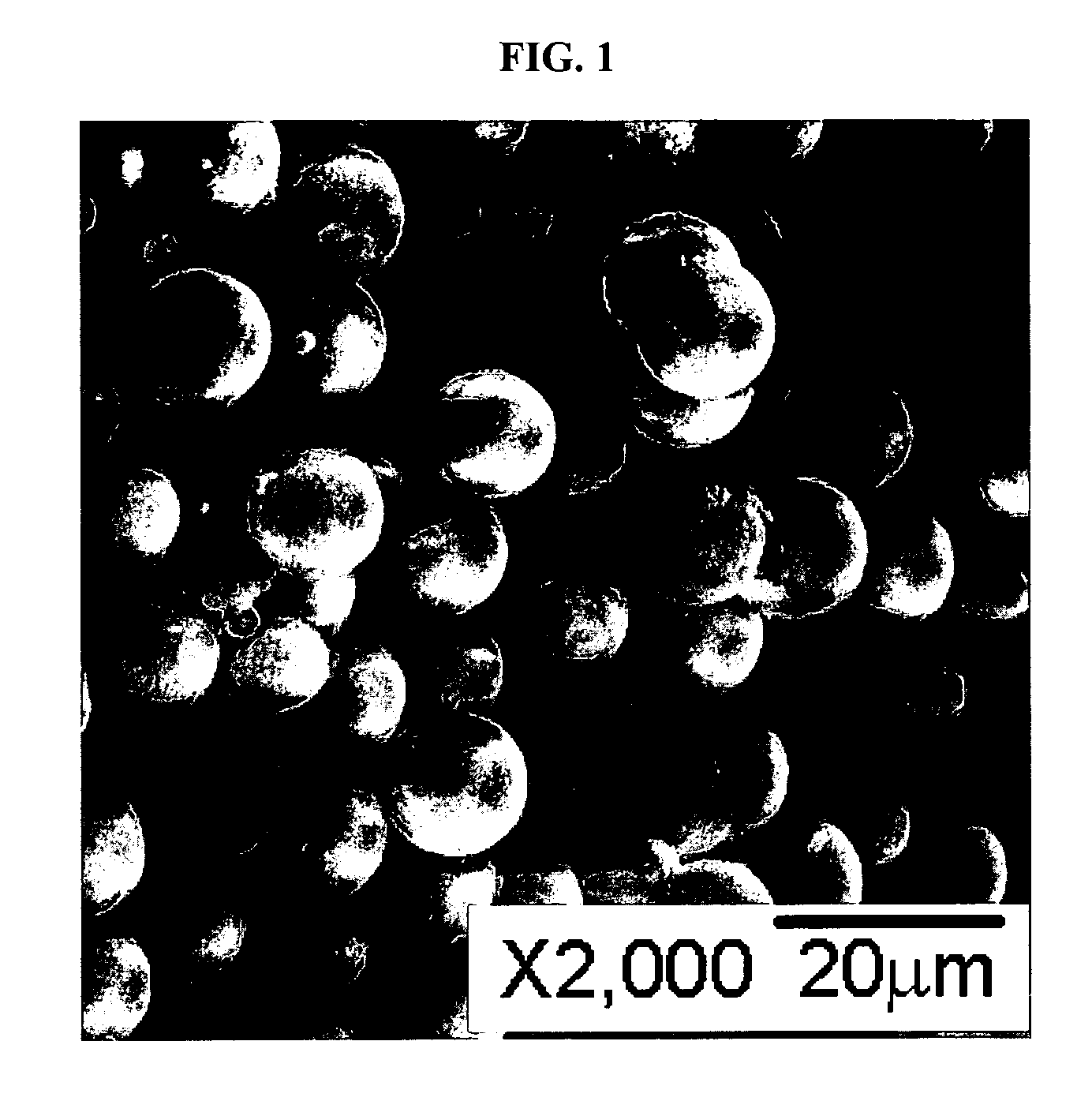Processes for making dense, spherical active materials for lithium-ion cells
- Summary
- Abstract
- Description
- Claims
- Application Information
AI Technical Summary
Benefits of technology
Problems solved by technology
Method used
Image
Examples
example 1
[0040] A (Ni,Co,Mn)CO3 compound was prepared from a solution of 0.1 M each of Ni(OCOCH3)2, Co(NO3)2, Mn(OCOCH3)2, and 1 M NH4HCO3. The solution was prepared at 65° C. over 17 h, and the targeted composition was (Ni1 / 3Co1 / 3Mn1 / 3)CO3. FIG. 1 is an image of the prepared (Ni,Co,Mn)CO3 sample as recorded using SEM. The SEM image of the precipitated carbonate shows a dense and spherical morphology with average particle size of approximately 4-5 μm. The elemental analysis revealed that the composition of the carbonate was (Ni0.255Co0.362Mn0.383)CO3, which, presumably, was due to strong Ni—NH3 complex in the solution leading to partial precipitation of the Ni component. Incomplete precipitation of Ni was also confirmed by the observation of a blue color of the filtered solution. Blue is indicative of the presence of Ni—NH3 complexes.
example 2
[0042] A sample of (Ni1 / 3Co1 / 3Mn1 / 3)CO3 was prepared from a solution of 0.2 M of NiSO4, 0.2 M CoSO4, 0.2 M MnSO4, and 1 M of NaHCO3. (NH4)2SO4 (0.067 M) was used as a chelating agent, and the pH was adjust to 7-8 using NH4OH. The reaction was carried out at 50° C. and 17 h. FIGS. 3A and 3B show SEM images of (Ni1 / 3Co1 / 3Mn1 / 3)CO3 at different magnifications. The chemical composition of the carbonate was confirmed by elemental analysis. The use of NaHCO3 resulted in the preparation of a dense carbonate powder with spherical morphology and an average particle size of 2-4 μm.
example 3
[0043] A different sample of (Ni1 / 3Co1 / 3Mn1 / 3)CO3 was prepared from a solution of 0.1 M each of Ni(OCOCH3)2, Co(NO3)2, Mn(OCOCH3)2, and a mixture of 0.9M NaHCO3 and 0.1M NH4HCO3 at 50° C. and over 24 h. FIG. 4 is an SEM image of the different sample of (Ni1 / 3Co1 / 3Mn1 / 3)CO3. The use of a mixture of NaHCO3 and NH4HCO3 resulted in the preparation of a dense carbonate powder with spherical morphology and an average particle size of 2-5 μm.
PUM
 Login to View More
Login to View More Abstract
Description
Claims
Application Information
 Login to View More
Login to View More - R&D
- Intellectual Property
- Life Sciences
- Materials
- Tech Scout
- Unparalleled Data Quality
- Higher Quality Content
- 60% Fewer Hallucinations
Browse by: Latest US Patents, China's latest patents, Technical Efficacy Thesaurus, Application Domain, Technology Topic, Popular Technical Reports.
© 2025 PatSnap. All rights reserved.Legal|Privacy policy|Modern Slavery Act Transparency Statement|Sitemap|About US| Contact US: help@patsnap.com



